By site editor Dan Chung:
At the recent Sony event in Germany I spoke to Ryoko Noguchi about how the new optical variable low pass filter in RX1R II works. When shooting hi-res stills it is designed to allow users the choice between images with greater sharpness, or images with reduced moire and aliasing. It is a liquid crystal glass filter that sits in front of the image sensor and blurs the image by different amounts depending on the voltage applied to it by the camera. There are three settings – off, standard, or high. In the RX1R II it only functions in stills mode and has no impact in video mode, but in future models I hope that the system could be adapted for work video as well.
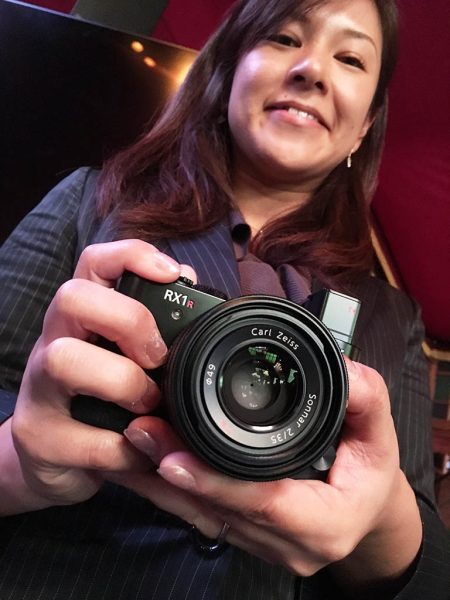
Variable optical low pass filters could potentially revolutionise large sensor digital cameras both for stills and video. All that needs to happen is for Sony to develop a version that has several stronger blur options that suit different resolutions and sensor sizes.
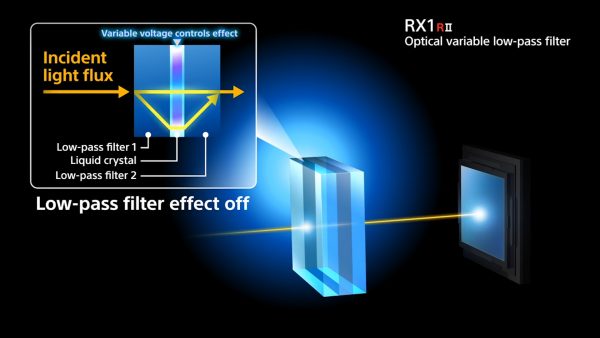
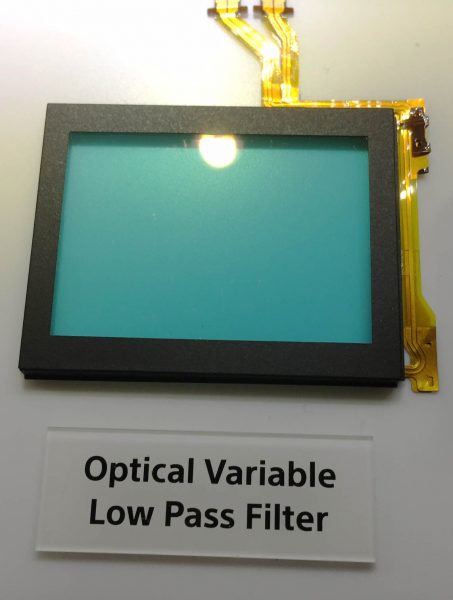
Currently most CMOS sensor cameras have a fixed optical low pass filter (OLPF) fixed in front of the sensor that is tuned to a specific resolution. The aim is to reduce aliasing with bayer sensors by stopping high frequency image information – essentially blurring the image a little. Some stills cameras are available in two versions, one with a low pass filter fitted, and one without.
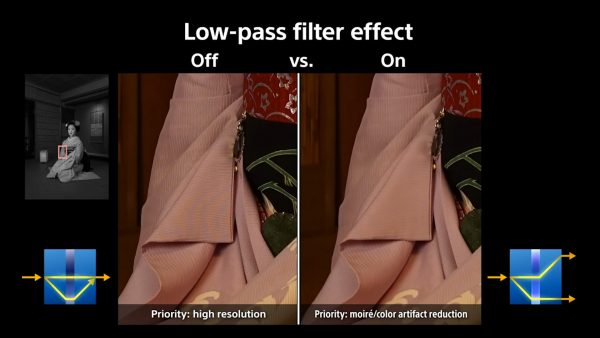
With video cameras the problems with aliasing and moire often start when shooting on lower resolutions than the principle resolution the sensor is optimised for. Shooting 1080 HD on a large megapixel sensor designed for 4K video, or high res stills sensor, can result in heavy aliasing. Some cameras are worse than others, but even the best ones that use full pixel readouts instead of pixel binning would probably benefit from an optimised physical optical low pass filter. Even cameras that have quite good HD downscaling in camera tend to do a worse job when shooting high frame rates. To cope with the speed they tend to fall back on inferior pixel binning, or crop the sensor to reduce the number of pixels they have to deal with. Indeed the latest a7S II has to use a 2.2x crop to get a better 120fps image.
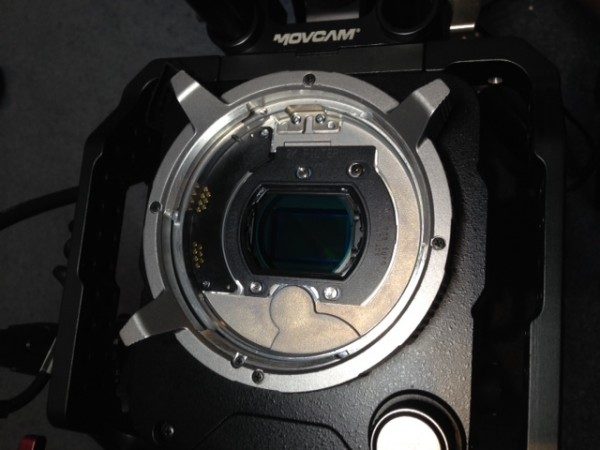
In some high end cinema cameras like REDs, or Sony’s F55, there is the option to physically change the filter to match the resolution you are shooting at, or tune the detail level. These work well but take time to change and need near-clean-room conditions to do so. They are expensive and specific to individual cameras.
If Sony make variable optical low pass filters for video all these problems potentially go away. Imagine a low pass filter that can match 8K, 6K, 5K, 4K and HD in full frame, Super35 and Super16, all automatically as you change resolutions. We could wave goodbye to aliasing and moire forever. Let’s hope they are working on it. From the smile on Ryoko’s face I think I already know the answer.





